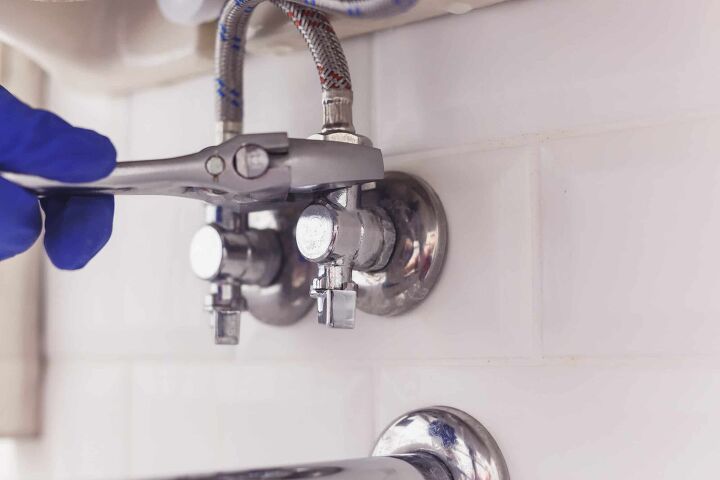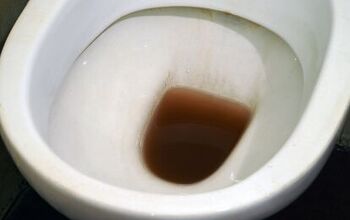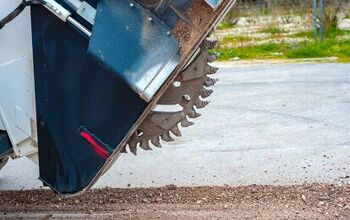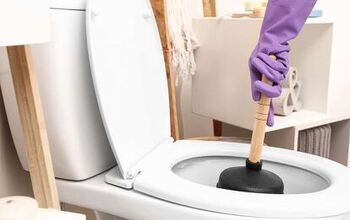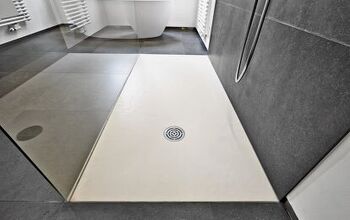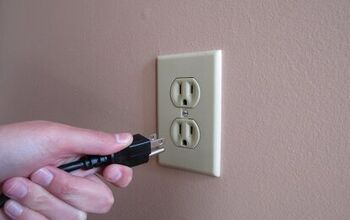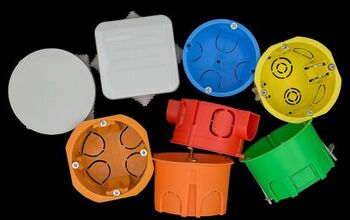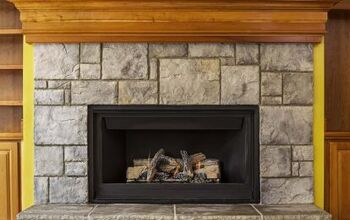Shut Off Valve Under Sink Won't Shut Off Water? (We Have A Fix)

It doesn’t matter if you are working on a home improvement project or in the middle of a plumbing emergency. When the shut-off valve isn’t working the way that it is supposed to work, it can be a real pain to the rear end. So what do you do if the water won’t shut off with the under sink shut off valve? What causes this?
If the shut off valve under your sink won’t shut the water off, it can because the valve is either stuck, partially closed, or leaking. Alternatively, it can be due to a pipe burst or a saddle valve that’s leaking. Only fixing or replacing the valve will help to fix this problem.
In this article, we will talk about the shut off valve and the issues that may cause it to malfunction. In addition, we provide some easy, quick fixes so that you can turn the water off.
Related Content: Is Your Saddle Valve Leaking? | How to Remove A Saddle Valve | Is Your Main Water Shut-Off Valve Stuck?
Do You Need to Hire a Plumber?
Get free, zero-commitment quotes from pro contractors near you.

What Is The Shut Off Valve?
The shut-off valve is in every kind of home. Most of the appliances and fixtures in your home will have an individual shut-off valve of their own. These are your water heaters, sinks, toilets, and dishwasher. This is so they can be repaired or replaced.
If the shut-off valves on these things isn’t working, you can generally use the main shut-off valve. It is the valve that shuts off water flow to the rest of the house so that any construction or repairs can be implemented.
The different valves are in place to act as safeguards in the event that one of the other valves are not working. After all, there needs to be a way to turn the water off to an area that requires repair or replacement.
What Is The Culprit?
There are a number of things that can be the issue behind your valve failing to completely shut off the water. Being able to identify the issue is the first step in solving the problem. When you can identify the problem with the shut-off valve, you can begin to apply the appropriate fix for the job.
There are a handful of things that can go wrong with your shut-off valve. This goes for both the local shut-off valve as well as the main shut-off valve that controls the flow of water to your home. Here is what to look for and how you can combat those issues.
A Stuck Valve
Perhaps the most common culprit when your shut-off valve isn’t closing is because the valve is stuck. This is where the valve simply does not turn. This happens mostly with older main shut offs as well as fixture shut offs.
The simple fix is a little bit of WD-40. Give it some time to properly lubricate before trying the valve again. In most instances, this will solve the problem at least in the short term. It is imperative that you give the valve time to lubricate.
For long-term care, it is important to turn the valves off and on every once in a while, in addition to spraying them with WD-40. This will help to prevent rusting and other common issues that result in the valves failing to close.
Valve Closes Partially
There are other times where you can turn the valve but not all the way. While that is better than not being able to move it at all, it still leaves you with a valve that won’t close and will continue to flow. That partial shut off is just as annoying to deal with as one that doesn’t close at all.
Unfortunately, the solution is not as easy as it can be with a stuck valve. You can try spraying some WD-40 to see if it will open up, but more likely than not it will require a completely new valve. It is probably better to replace the valve in general because there could be other damage that occurred to the valve that WD-40 won’t fix.
Getting a new valve will ensure that it turns smoothly and functions the way that it is meant to. No more headaches, no more hassles when it comes time to turn the valve off and on.
Leaky Valves
Maybe you can get your valve to close completely. This can make it seem like all is as it was meant to be. But then you notice that there is leaking coming from either the main water valve or one of the sub valves attached to your fixtures and appliances.
The most common cause of this is that the seal isn’t watertight. Start by tightening all of the fittings using a pair of pliers. If nothing is damaged, this should be enough to stop the leaking from occurring. If the leak persists, however, it can get far more complicated.
Start by taking the entire valve apart, replacing the washer first and foremost. If replacing the washer doesn’t do the trick, you may have to replace the entire valve as it can take a lot of time and troubleshooting to find the culprit.
Pipes Burst
One of the more common issues during the winter is to go turn the shut off valve only to find that it doesn’t cut off the flow of water. A major reason that homeowners turn the water off to their water flow during the winter is to prevent pipes from freezing during extended periods where they won’t be using it.
Even though this practice is implemented to help save the pipes, water will often times get frozen between the shut off valve and the spigot. When this happens, the pipe will freeze and eventually burst. The bad part is that you may not even notice the problem until you turn the water back on.
As soon as you turn the water back on, it will become readily apparent that there is an issue. If you have turned off your shut off valve in the winter for an extended period of time, check to make sure there is no leaking or burst pipes in play before you turn your water back on. It will save you quite a bit of mess and headache in the end.
Saddle Valves
There are some older homes or fixtures that will have what is known as a saddle valve instead of the traditional shut off valves that we are familiar with. These valves have a T-handle to them and can be especially prone to things like leaks.
If you notice that you have a saddle valve, you should try to replace it as soon as you can with a regular shut off valve. Doing so will ensure that you prevent water damage from occurring as those old valves are prone to leaking and bursting.
Can I Fix These Issues Myself?
You can fix the valves under your sink yourself, and you don’t need to be a plumber to do so or certified in that type of work. You first need to figure out the actual problem before you can do the work. So follow this guide and check each of the common issues before you decide to call a plumber.
However, you will need to make sure that you have the equipment necessary to do the work. Also, check with your local jurisdiction to make sure that you have permission to fix this. Usually, valves are fine for DIY projects; it’s the actual plumbing that they want you to have a building permit to fix or tinker with.
When To Hire A Plumber
If you’re not sure what you’re doing or uncomfortable with the larger DIY projects, then perhaps it may be a better idea for you to hire a professional for this project. Or, if you’ve tried fixing it yourself to no avail, then the issue may be deeper within your plumbing, so then you would need a plumber to check all of the problems to figure out what’s going on.
A certified plumber will have all of the necessary equipment to fix and diagnose your valve problem. They use equipment that’s worth tens of thousands of dollars and are able to do some work that you otherwise may not be able to do. But first, try it on your own because they can fix anything you accidentally mess up anyway.
Do You Need to Hire a Plumber?
Get free, zero-commitment quotes from pro contractors near you.

Be Familiar With Your Plumbing
It is a good idea in general to be familiar with the plumbing in your home. While you may not feel comfortable making any kind of plumbing repairs or changes, it is still important to know where the shut off valves are.
This way, when there is a plumbing emergency, you can locate the shut off valve and at least stop any potential water damage from occurring. Without knowledge of those shut off valve locations, you could be stuck staring down water damage as it unfolds in front of you.
Most of the time, the problem has to do with a damaged or broken shut off valve. Implement repairs or a replacement as soon as you can to prevent any future leaking or potential water damage from happening in your home.

Ryan Womeldorf has more than a decade of experience writing. He loves to blog about construction, plumbing, and other home topics. Ryan also loves hockey and a lifelong Buffalo sports fan.
More by Ryan Womeldorf



